
Introduction
The software-as-a-service industry―or SaaS as it’s more commonly called―has been around for quite some time now, and it’s enjoyed a fairly impressive growth rate.
Over the last few years, however, the popularity of SaaS companies has skyrocketed, and with this increased success have come more opportunities for newcomers to get involved in the field.
The popularity of cloud-based software has risen as companies transition away from traditional in-house software to applications made accessible over the internet.
Currently, there are approximately 744 SaaS (Software-as-a-service) companies operating within Canada.
The global Software as a Service (SaaS) market is expected to grow at a CAGR of 11.7 percent from USD 158.2 billion in 2020 to USD 307.3 billion in 2026.
As organizations around the world embrace SaaS solutions for a variety of business functions, the overall SaaS market is expected to continue to expand.
Solutions for customer resource management (CRM), enterprise resource planning (ERP), web hosting, and eCommerce are among them.
There are a number of factors that have contributed to the rise of SaaS, not least of which is the fact that every day there are more and more SaaS companies coming on board.
What is causing SaaS to grow at such a rapid rate? What do you need to do to stay relevant? How are lead generation companies in the US and Canada contributing, and what lies ahead?
SaaS is Taking Over – How Should Marketers React?
SaaS has its own set of rules. As marketers of SaaS, you have to be the most creative people on the planet.
You are marketing something that has no physical presence, is constantly changing and only a handful of companies are interested in it. In fact, you market something that does not even make sense to the majority of the people.
You need to use different tactics to make a sale and then drive people into free trials, demos and sales. And once you’ve made that sale, you still need to get them up and running the right way.
It’s not all about trial growth and churn rates. There are a lot of other calculations to take into account when getting your return on investment (ROI).
SaaS represents a return to simpler times. When you buy something, you don’t have to worry about hardware, storage space, or maintenance. You simply pay a monthly fee.
Many lead generation companies in the US and Canada have rid of many buyers over initial hesitation by introducing concepts like customer lifetime value, recurring business, and customer retention.
All of this means that a new breed of SaaS products is eager to vie for enterprises’ attention and dollars. These products are innovative, useful, and often free to try—just like the software on your computer.
Besides, the cost of developing and marketing software has also decreased, lowering entry barriers. The ease with which SaaS can be updated instantly means that there is often little difference between competitors.
You get the ideas. As marketers, that’s the challenge!
How Many SaaS Companies Are There?
Over the last two decades, the SaaS industry has experienced phenomenal growth. According to a list of SaaS companies obtained from Crunchbase in June 2020, there are 15,529 SaaS companies in the world.
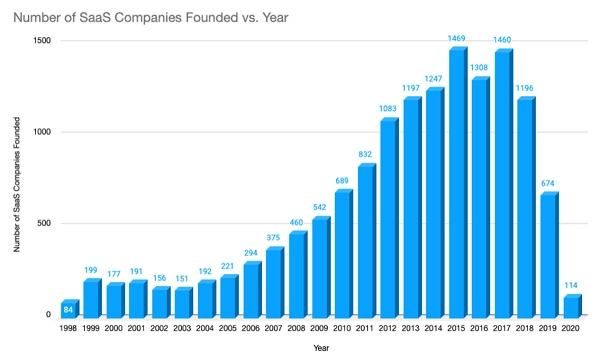
Image source: CardConnect
The decline in the number of SaaS organizations created in recent years may simply be a collection of incomplete data for the past five years.
Or, it may indicate a plateau reaching its end at this point in time in terms of the creation and growth of new SaaS companies.
What Do the Current B2B SaaS Market Trends in the US and Canada Look Like?
The United States, Canada, Japan, China, and Europe are expected to drive the global Hybrid Cloud segment’s 20.3 percent CAGR. These regional markets, which had a total market size of US$15.4 billion in 2020, would grow to US$56.2 billion by the end of the study period.
North America is the most mature SaaS market in the world, but as more advanced technologies emerge, it still poses challenges. SaaS providers in both the US and Canada are attempting to meet growing demands for increased service security and scalability.
That said, some key players in the market include Google Inc., IBM Corporation, HP, Oracle Corporation, Microsoft Corporation, Symantec Corporation, SAP, and Salesforce.
What Is the Revenue Opportunity for SaaS in the Near Future?
The COVID-19 pandemic has served as a wake-up call to the business community. Even so, the software-as-a-service market is anticipated to reach nearly $123 billion by 2021.It is a reminder for marketers in lead generation companies in the US and Canada that there is still a silver lining, especially in times of economic uncertainty.
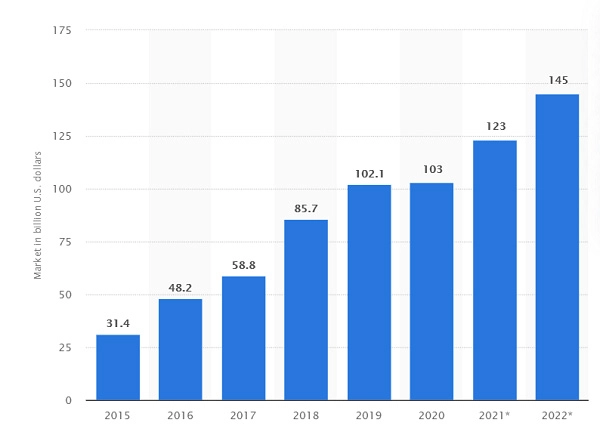
Image Source: Statista
Most SaaS founders struggle with the question of how fast is fast enough for development. What should be the benchmark for growth?
While the questions are similar, the answers depend on the SaaS company and what they want their business to look like in one year. It is critical to consider several factors that influence both the growth itself and the quality of that growth.
For a SaaS startup to have high chances of becoming a unicorn in its niche—especially in the USA and Canada—it has to do the following:
- Find a lead generation company to market their product.
- Set a benchmark Annual Recurring Revenue (ARR). For example, it can be $2 million.
- Grow with a factor of 3-3-2-2-2 to reach the ARR of $144 million within five years.
Simple? Not as simple as it sounds.
Mapping the Canadian and the US Marketplace and How It Influences SaaS
Economic diversity is the key to both the United States and Canada’s success at making money.
While the largest SaaS companies have traditionally been associated with the United States, the industry is leading to new hubs around the world. Traditional tech hubs in North America are seeing a dramatic expansion, with Canada quickly becoming a magnet for SaaS entrepreneurs.
According to Crunchbase, the Golden State of California accounts for over 158% of the global SaaS industry. There are 758 SaaS companies in Silicon Valley alone, out of 2,517 in California. These statistics confirm that Silicon Valley remains the U.S. SaaS epicenter.
However, more startups are being developed outside of the US, resulting in a more dynamic and distributed marketplace.
SaaS organizations are emerging in new countries every year as technology continues to spread across the globe. According to Crunchbase, SaaS businesses can be found in 100 countries worldwide, as shown on the chart below:

Image source: CardConnect
According to Getlatka’s most recent data, the United States continues to have the highest revenue ($138.8 billion), highest total funding ($22.7 billion), and a total number of employees (2M).
Other countries are catching up. The latest countries seeing a boom in SaaS companies include the United Kingdom with a revenue of $10.1 billion, followed by Canada with $5.8 billion in revenue.
How Should Your Marketing Team Strategize for a SaaS Company?
Unlike B2B, SaaS sales cycles are fast. Really fast.
If you’re not able to move fast and need every sale to be ready to sign on the dotted line, you may want to reconsider your approach.
There will be no building relationships, fancy sporting events, elegant wine tastings, or teeing off at a high-priced golf club.
Selling SaaS is simple—you just need unbiased reviews and a clean and easy way to sign up, and done!
The nature of software is one of the factors that contribute to how quick the process is. Like many aspects of the technology world, software is a dynamic field that is always changing, progressing, and experiencing setbacks.
Imagine if you had to rewrite all your sales training guides every six months. The same goes for SaaS too. If a sales cycle lasted six months, the software would have gone through at least a dozen iterations during that time. It would be a nightmare!
One of the biggest annoyances to marketing is when buyers take forever to make a decision. But when you’re selling software, don’t get too worked up if you lose a few sales because the buyer “isn’t ready.” There will be lots of other buyers who are ready to make a decision for you.
Here’s a trick that most lead generation companies in the US and Canada use to boost sales. They simply get people to do the work for them by providing a delightful experience.
Let’s discuss how to sell your SaaS product in the US and Canada in the section below.
How to Sell Your SaaS Product in the US and Canada
Will your product generate a ton of sales? Absolutely. Will it happen overnight? Probably not.
Confident buyers of software products don’t sleep on their purchase decisions. They want answers quickly, and they’re willing to spend time understanding products and figuring out if they can work with the business model.
How do you strategize your marketing model around it?
We’ve compiled an all-in-one list of essential marketing strategies. From agile marketing to viral marketing, we’ve explanations, examples, and detailed pros/cons of each approach so that when it’s time to roll up your sleeves and get to work, you’ll know what to do:
1. Agile Marketing

Image source: Ricksoft, Inc.
An agile marketing campaign would be a series of tests, like throwing rocks into a pond and observing the ripples, rather than a drawn-out Gantt chart of a long-term campaign. Agile marketers focus on small tasks with immediate results. A lot of lead generation companies in the US work on this strategy.
Much like the agile software development philosophy, it uses a modified version where products are updated frequently, based upon interactions with real users.
This allows marketers to be more responsive and dynamic in the fast-paced SaaS world. Besides, it is easier to figure out the initiatives that do not work and double-down on channels that deliver a high return on investment.
2. Content Marketing
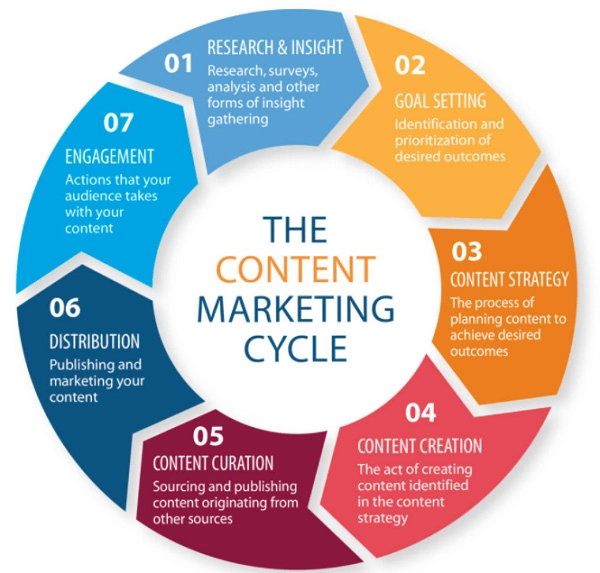
Image Source: FusionSpark
Content marketing is the online activity of creating and distributing valuable, relevant, and consistent content to attract and acquire a clearly defined audience.
So, every time you encounter a helpful blog post, download a free guide, or sign up for a newsletter—that’s content marketing.
At its most basic level, it’s the act of publishing useful resources in order to attract and engage your target audience. Content marketing can help potential customers understand their SaaS problems, and shows why your product is the right tool for the job. Almost all lead generation companies in the US and Canada use content marketing as their primary strategy for brand awareness.
3. Email Marketing
Even as social media and digital marketing become more popular, email retains significant strengths as a direct method of capturing opt-in subscribers and keeping them engaged as customers.
By utilizing the best email marketing service, marketers can cost-effectively engage and re-engage leads, and nurture them toward a sales discussion.
After all, that’s the whole point of a SaaS campaign, isn’t it?
4. Growth Marketing
Although it’s easy to think of marketing as a way to generate visitors and leads, only sales can effectively close deals and keep customers.
However, for SaaS companies, generating leads and closing deals is not enough. When you acquire a customer, you want them to become repeat buyers.
Here’s where growth marketing chimes in.
Growth Marketing is the process that helps you leverage lead generation to build relationships that convert. It’s about discovering your ideal customer, understanding their pain points and building a relationship with them over time.
Instead of throwing in the towel at the point of contact form submission, you continue to engage, educate and nurture your visitors to the point of sale–and beyond.
5. Inbound Marketing
Inbound marketing is a customer-centric approach to lead generation. You focus on answering the questions they have, rather than on promoting your product.
In fact, you make yourself a resource people want to learn from — not a pushy salesperson trying to force people into making a decision they’re not ready for.
There’s no doubt that great content is a key element to a successful inbound marketing strategy. It’s the linchpin, if you like. But it isn’t the only element.
Inbound marketing uses a set of ingredients and tools—content, community, email marketing, social media, etc—to build a properly planned product for potential customers. It is a go-to strategy of most lead generation companies in the US and Canada.
6. Product Marketing
Product marketing is the process of strategically positioning a product or service to your market and designing an effective message that will convert your audience.
The product marketer’s job is to decide on the product’s positioning and key messaging ahead of launch, and ensure that customers – and your sales team – understand it.
None-the-less, it comes down to an understanding of your customers’ needs and how your product or service aligns with those needs.
Read more: Product marketing strategy for SaaS startups
7. Account Based Marketing
Account-based marketing is a targeted strategy to outbound marketing that aims to strategically interact with target accounts and nurture them to the point where they are ready to buy.
Marketing teams can work closely with sales to land dream customers using techniques like pay-per-click advertising, retargeting, and email nurturing.
Account-based marketing is a perfect fit for SaaS startups looking to sell into the enterprise. For example, the best lead generation companies in the US and Canada allow you to sell your product to CMOs, not just into IT departments.
How to Launch Your SaaS Product? Top 3 Things You Should Do
When it comes to SaaS, marketing is a daunting task. There are a lot of information out there.
You can’t simply create an all-things-all-the-time messaging plan without taking the time to understand your audience.
You need to get to know your customers’ motivations and behavior and develop a strategy that aligns with their needs.
How do you do it? Before you start planning, do your homework and establish the following three points:👇
1. Narrow Down On Your Hero Statement.
Not every SaaS company is trying to be a jack of all trades, and there’s nothing wrong with that. It’s great to find a customer segment that will love your product, and it is just as important to not waste time on those who will never be interested in your product.
Your hero statement doesn’t have to be long, but it does have to be effective. It should focus on the right target customers for the right reasons. It can be a mix of the corporate profile or persona you’re best at delivering support and the problem you’re best at solving for them.
2. List Your KPIs.
Marketing metrics are your primary source of insight into what’s driving revenue and customer acquisition in your SaaS business.
Once such metrics is the conversion rate. Getting a lot of website visitors is good, especially if your goal is to create brand awareness. But it’s what they do once they’ve arrived that makes a difference.
If you’re just getting started, make sure you have a consistent way of measuring conversions on your most important pages, for example, form submissions, CTA clicks, or video views.
That way, you’ll have some baseline data to compare to all of the CRO optimization initiatives you include in your marketing strategy.
Go for a SMART KPI target: Specific, Measurable, Attainable, Realistic, and Timely.
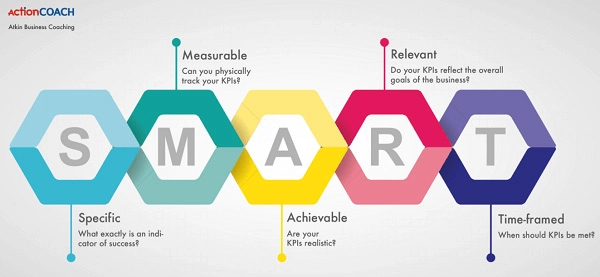
Image Source: ActionCOACH
- S stands for Specific, meaning you should be clear about your goals.
- M stands for Measurable, meaning you should know how to measure your goals and analyze your result.
- A stands for Attainable, depicting the real market situation that allows your product to grow.
- R stands for Realistic, determining the current abilities of your team.
- T stands for Timely, meaning you should establish checkpoints to review the results.
Here’s what’s interesting about the approach. Even if you don’t have years of data to work with, SMART goals can help you establish a baseline from which to work in the future. Lead generation companies in the US and Canada swear by this approach too.
3. Plan Your Sales and Marketing SLAs.
SaaS companies that are just starting out often run into conflicts between their sales and marketing teams. Therefore, it is important to build your plan with both the teams involved.
Most lead generation companies in US and Canada work on SLAs (service-level agreement) to inform both teams what to expect of each other, which is:
- The marketing team should provide a certain number of leads to sales every month.
- The sales team must call those leads and follow up at regular intervals.
However, there may be a downside. If the marketing team does not provide quality leads, sales may lose interest in engaging with them.
You can only achieve true harmony by assigning a common goal to both teams—revenue. Start with your consumers and move backwards through your funnel’s conversion rates to evaluate:
- How much revenue does a typical consumer bring in?
- What percentage of sales demo results in new customers?
- What percentage of sales interactions result in a demo or trial?
- Is sales able to contact a certain percentage of leads?
- How many leads do marketing provide sales every month?
- How many leads do marketing activities generate?
Are You Ready to Market Your SaaS Product in the US and Canada?
In many ways, SaaS marketing and other types of digital marketing are similar, but nowhere else will you find the close integration and synergy that you will find in SaaS marketing.
There is a massive pool of opportunities for lead generation companies in the US and Canada. Now that you know everything you need to launch a successful campaign, you can leverage the advantage of a B2B lead generation company like Unbound.com.
Unbound uses AI-driven marketing campaigns to collect purchase intent data of actual buyers and deliver 100% qualified leads. If you want to discuss more about your marketing needs, click here.
Is there anything we forgot to mention? Please let us know in the comments section
Our blog
Latest blog posts
Tool and strategies modern teams need to help their companies grow.

Take advantage of the year-end holiday rush so you can boost your SaaS revenue and st...
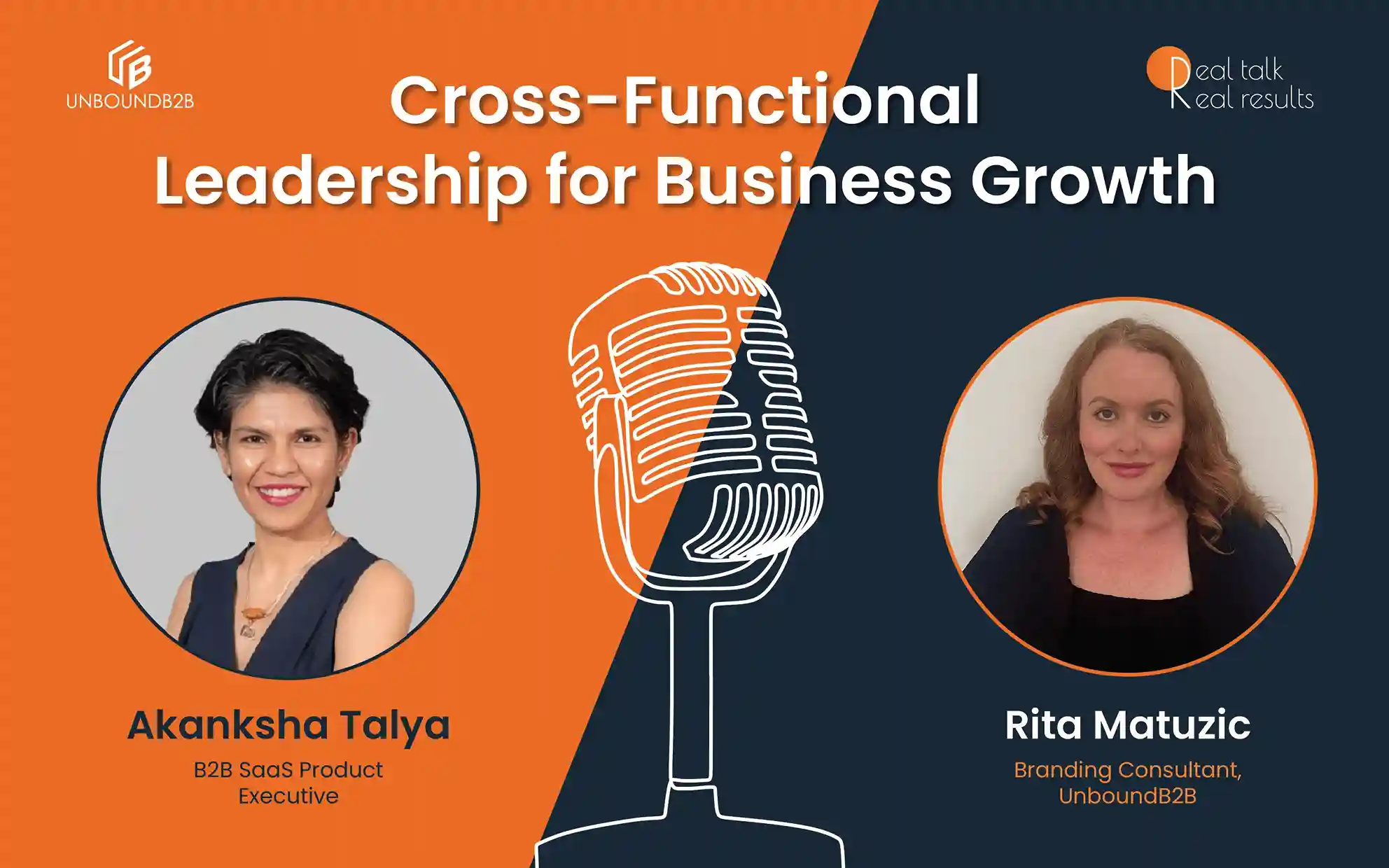
Boundaryless, cross-functional leadership is the key to successful, high-performing p...

There are various methods to target your ideal customers in programmatic advertising,...






